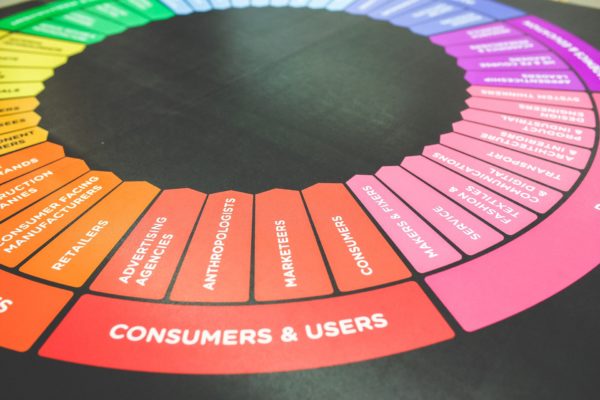Marketing is a big numbers game. You need to track countless actions of countless leads across countless channels. You need to gather insights from every source possible, whether it’s your website, IoT devices, published industry studies, public online information like traffic data, or anything along those lines. Finally, you have to combine everything that you have learned into a coherent strategy. And this is just the preparation stage—executing the strategy, tracking its progress, and reacting to emergencies can be even more demanding and costly.
So why isn’t AI (artificial intelligence) already commonplace in marketing agencies (AI is actually a broader term than machine learning, but for the sake of simplicity, we will be using them interchangeably)? According to a relatively recent study, the main reason is that marketers still largely need someone to demystify the notion of machine learning for them, to bring it closer to how they see their industry and to relate it to the practices they are already used to.
This is my humble contribution to that cause, a list of plainly explained ways to leverage machine learning in your marketing efforts, and the contributions that AI is already making in this area. While you might find some of the possible applications too pricey, infrastructure-reliant, or simply unnecessary, they will be shaping the industry you are working in, and at least being aware of them is obligatory if you want to call yourself a marketer.
1. Audience targeting and segmentation
Everything you need to know about how the type of product you are promoting is being perceived by the public is out there. What groups of people usually need that product, when are they the likeliest to buy it, how much are they prepared to pay, what other products do they like, etc. Data with these insights is everywhere, and its amount is growing by the second.
Even though the term big data and the notion it describes have been with for a while, they are often met with similar apprehensions as machine learning – people are sure it is bound to be useful, but don’t know how to leverage it. This is where AI comes in.
The main issue with big data is not where to find it, but how to process it and actually get something useful out of it. Regardless of the size of the team of data scientists you may have at your disposal, they won’t be able to do much with adequate machine learning utilities.
However, if you are properly equipped, or get some help from outsourced marketing analytics and big data companies, these insights could help you learn everything you need to know about the people you want to turn into your customers.
2. Programmatic advertising
Aside from informing your decisions regarding other segments of your marketing campaign, the insights gained from machine learning assisted data mining can be directly implemented in programmatic advertising. However, this is not where the contribution of machine learning to this part of your marketing efforts stops. Apart from letting you set up the initial campaign, AI can also track its performance and adjust the targets accordingly based on the observed behavior.
While this doesn’t mean that you can start taking the ‘set it and forget’ approach with your PPC campaigns, it will make them far more effective than they used to be.

3. Competitor and market analysis
Potential customers are not the only ones you should be keeping your eye on. Your competitors are as important a part of the equation as the audience you are trying to draw away from them. By tracking and analyzing data on their publishing frequency, favorite social media platforms, incoming links and every other traceable action, you are not only learning about their strategy, weaknesses or strengths, you are also learning a lot about the market you are catering to. You see, your competitors themselves might be engaging in some data mining of their own. By directly observing their actions, you are getting the summary of their findings, the results of their conclusions. In a way, they are doing some of the heavy lifting for you, analyzing big data and then presenting you with their findings simply by acting upon them.
4. KPI and campaign tracking
There is much more to campaign tracking than opening Google Analytics and checking if your conversions are going up. People are responding to your efforts in many different ways aside from clicking on a subscribe button or making a purchase.
For instance, they are leaving feedback on different social networks, feedback that you can use machine-assisted sentiment analysis to classify as positive or negative without ever seeing what is actually being said.
This kind of instant insight into how your campaign is progressing and how people are reacting to it gives you a chance to immediately react to any alarming signals and potentially avert an otherwise imminent disaster.
5. Predictive analytics and demand forecasting
Ok, so machine learning gives you an amazing overview of the current state of things, but wouldn’t it be nifty if it could also let you take a peek into the future. Why, yes it would, and actually, yes it does. Through big data analysis, you are given a chance to observe situations similar to your current one, how those situations were handled, and which outcomes stemmed from which reactions.
This gives you the ability to, with a fair bit of certainty, predict the progress of your campaigns and potential consequences of the actions you are planning to take. Learning from your past mistakes and triumphs, or from those of others is an essential skill regardless of the industry you are in, and the more of them you observe, the more accurate will your predictions for the future be.
Naturally, aside from just letting you anticipate outcomes of your actions, this kind of predictive analytics can be used to forecast the changes in the market as well. While the number of factors that go into determining the fluctuations in the price or demand for a particular product might make an average human dizzy, machines are having a much easier time of defining the mutual relationships between these factors and at predicting the result of their interactions.
While the projections obtained this way are far from exact, they can still make a huge difference. Imagine knowing that everyone who tried an approach that you are currently considering has failed or finding out that a product that you could be making is about to become extremely sought after. Sure, it would make the game less interesting, but it would definitely make it safer.

6. Remarketing and recommenders
Another customer has just slipped through your fingers? They were on the brink of purchase, but they’ve given up at the last moment? Aside from perhaps being able to give you an idea of what caused their reluctance, taking note of their actions before they decide to leave can also inform you if there is perhaps another product in your offer that they might be interested in. Once this interest is recorded, there are several ways to cater to it.
The traditional ways include the mentioned programmatic advertising, as well as always popular emails, however, machine learning is allowing us to take this one step closer to the source through the use of different recommendation engines. Large ecommerce stores have been relying on this for some time now and have recorded amazing success with this technique. Namely, all the analysis of a customer’s behavior is done in real-time and coupled with the previous insights on that particular customer and a multitude of others, is capable of coming up with a suitable alternative recommendation for a product. Naturally, the customer doesn’t have to bounce in order for this to work. In other words, whether they have purchased a product or not, your recommendation engine can immediately serve them with something else from your repertoire that they may like.
7. Improving voice and image search
While you as a marketer or a business owner may not have a way to leverage AI in this regard yet, machine learning is making significant improvements in the fields of voice and image recognition, and both of them are going to influence your promotional efforts drastically.
With mobile devices quickly becoming a dominant way of browsing the web and shopping, voice search is getting a lot more attention than it used to. In order for it to be available in different languages, to people with different accents, dialects or idiolects, voice search is being perfected by AI utilities going through hours upon hours of recorded material and finding patterns. The accuracy of voice recognition has been on a rapid climb since the adoption of this approach, and we are yet to see just how much more it can be improved.
While voice search is a relatively new thing, images have been around for a while, as have some basic recognition capabilities, but the things that machine learning has brought to the table almost belong in a science fiction novel. AI can not only distinguish between faces and other objects, it can identify people with a fair degree of accuracy, as well as some common items. Among other things, this may lead to a future where search engines will be able to recognize your product from an image, even without the appropriate title and alt tag, and perhaps assign some value to this kind of a recommendation, potentially even competing with links as a ranking signal.
This is why, even if there is still nothing you can actually do about it, you would be wise to keep track of the progress in these areas and prepare for the changes this progress is bound to bring.
8. Customer support
How often did you have a customer ask an inane question that you’ve had to answer a thousand times before? And how often did that customer become frustrated by the lack of a hasty response? Too often, we’re willing to wager. As essential as it is, customer service can be quite a chore, especially for larger businesses. Especially so when you consider the fact that a lot of people can’t be bothered to look around for an FAQ section on a website, but instead head straight for the contact form.
Well, if this is one of the issues you are having, you’ll be pleased to learn that machines may do some of that work for you. While they are, of course, not capable of answering complex, specific quandaries, different AI-powered chatbots are perfectly within their means when it comes to handling more common issues.
This includes everything from explaining the basic functionalities of your website and helping with the onboarding of your clients if you are a software distributor, to actually handling some of the payment or refund operations. By drastically reducing your manpower requirements, this allows you to offer round the clock support to your customers, while keeping the costs relatively low.

9. Content generation
Sure, if they can answer questions, there is no reason to think that bots can’t also write content without being prompted to do so by the customers. Even though something like this has probably been unthinkable to most people before the emergence of Google Translate and other services proving that the peculiarities and context dependence of language can be handled by a machine (up to a point); today we are seeing an emergence of machine learning systems actually composing sensible content.
Whether it’s social media posts, or the contents of weekly newsletters, machines are slowly working out their writing chops and it may not be too long before they are praising themselves in articles like this one.
Currently, however, the results of them finding their voice are not too impressive. While they are showing amazing progress, even if they got everything else right, from basic semantics to idioms usage, they would still miss that personal touch which is often crucial in marketing. So, while it is important to prepare for the advent of the age of creative machines, they still have a long way to go before they can be relied on in this regard.
Conclusion
Even though AI is already being employed in a range of marketing activities, from audience targeting and market research, to customer retention and remarketing campaigns, we are still at a nascent stage of the development of this technology. This being the case, a lot of kinks are still being worked out, a lot of processes involved are inefficient or expensive and a lot of results unreliable.
However, since there is no doubt that alongside big data and IoT, machine learning is going to define our immediate future, not only related to marketing, getting in from the start and ensuring that you are ready to hop onto this particular gravy train as soon as it gathers enough steam, will be what differentiates those with a chance to prosper from those that are left behind.
- 9 Ways Machine Learning Is Improving Marketing - November 1, 2018




Comments are closed.